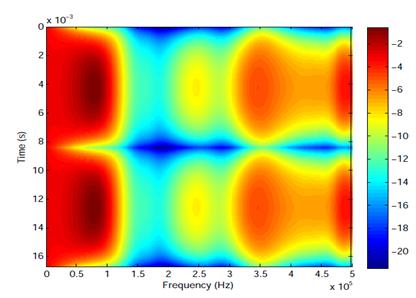

|
PLC Software |
|
Fariba Aalamifar, Alexander Schlogl, Don Harris, Lutz Lampe |
|
The "PLC software" is a network simulator-3 (ns-3) based implementation to simulate the signal propagation in power line communication (PLC) networks. The translation between underlying electricity grid topology and PLC signal propagation is done via two-conductor transmission line theory. The software modules accept user-defined topologies consisting of pre-defined grid elements (such as cables and time- and frequency-selective impedances) and elements specified in terms of ABCD matrices. This provides sufficient flexibility to capture any type of topology, modelling, for example, distribution grids and in-home wiring, as long as a two-conductor description or approximation is available. The main purpose of the "PLC software" is the integration of its modules into a PLC network simulation with ns-3. However, it can also be used just for the generation of channel transfer functions (a.k.a. channel frequency responses) and noise power spectral densities (PSDs) in a PLC network. This is a very important capability as different transfer functions and noise PSDs are interdependent, and thus cannot be generated/simulated in isolation. In addition to the underlying simulator software, a flexible graphical user interface (GUI) has been devised which provides tools to visually represent the topologies under consideration. The GUI presents an intuitive interface for designing topologies, adjusting model and simulation parameters, and generating channel transfer functions. By providing this high level interface to the underlying simulator, users are able to dramatically reduce the amount of time necessary to generate and analyze new topologies. This also allows users who have no experience with the ns-3 software library to still take advantage of the simulators basic functionality. More advanced users can integrate GUI generated topologies directly with ns-3 in order to leverage the software to their specific purposes. The following figures show two scenarios tested in the PLC software. Snapshots of the GUI and the channel transfer function are shown for both scenarios:
|




|
A PLACE OF MIND |
|
Large PLC network-fixed impedance |
|
Time and frequency varying impedance |





|
Contact us: faribaa@ece.ubc.ca alexander.schloegl@gmx.de dharris.ubc@gmail.com lampe@ece.ubc.ca
|

|
This software is freely usable provided that publications resulting from the use of this software cite the publications listed here and include a link to this website.
|
